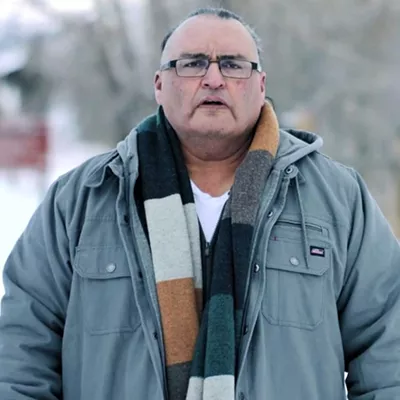Levy says he knew, as he finished that book, that he wanted a life that revolved around stars; he wanted to be an astronomer, or someone who wrote books about astronomy. Those duel passions--stars and words--combined to make Levy perhaps the most well-known amateur astronomer of all time, one who doesn't just have 21 notches in his telescope, but whose excellent writing has opened the world of astronomy to laypeople around the world. And, better yet, Levy doesn't merely observe beauty; he adds to it. His 1997 book, More Things in Heaven and Earth, was a compilation of ideas about the night sky from both astronomers and poets.
Born in Montreal, Levy saw his first comet--Ikeya-Seki--when he was 15. He soon began searching for comets from his Montreal backyard, and continued scanning the skies as he worked his way through English literature programs at Acadia University (Nova Scotia) and later at Queen's University in Ontario, finishing with a master's degree.
But wait, you say--where are all the astronomy courses? The easiest place to find an answer to that question is on Levy's Web page, www.jarnac.org. "Here," one section of his informal resume reads, "is a list of all the astronomy courses David has taken." Click on the link, and you get these words: "David has never taken an astronomy class." And he clearly doesn't need to; academic institutions are lining up to pile honorary doctorates on him, and--most importantly--he's hugely intelligent and determined, in a field that requires just that.
"It can be 19 years before you find anything," Levy says. "But ... I figured out a better way to do it (find comets), and they've been coming a little more quickly for me.
"Think of it (comet hunting) as a sport," he adds, "the world's slowest sport."
But while comet hunting itself is slow, Levy's rise to household name was faster than a rocket ship, propelled by a dramatic event that was witnessed around the globe.
In the summer of 1994, a comet named Shoemaker-Levy 9 (a discovery Levy shared with Gene and Carolyn Shoemaker, the couple with whom he shares 12 other comets) smashed into Jupiter, resulting in the biggest explosion ever witnessed on another planet and creating a mushroom cloud larger than Asia. The comet that looked like "a string of pearls" when Levy and the Shoemakers first saw it--actually a chain of 21 large fragments, including a chunk of ice and rock approximately the size of one of the Rocky Mountains--had hit Jupiter with a force that was hundreds of millions of times greater than the force of an atomic bomb.
The developments on Jupiter post-impact--"the comets hit Jupiter, and they left water," Levy says. "We got to see that happen"--have led Levy to support the theory that ancient comets brought water and organic material to what was a previously barren Earth. He also believes a comet ended the age of the dinosaurs, but if you're worried about yet another mega-comet hitting the planet ... well, call yourself a realist.
"It's not likely," Levy says. "It's definite. A mile-wide comet hits Earth every 100,000 years or so, and causes a global reaction. ... It probably won't be for a very long time, but it could be tomorrow." When it comes, Levy adds, there probably won't be much warning. (And that's my holiday gift to you--a bona fide excuse to blow that diet.)
One of the aspects of the Shoemaker-Levy 9 event that Levy likes most is that it drew the scientific community--and those outside that elite group--together.
"It was as if all of the astronomers of the Earth were working as one team," he says. "And it wasn't kept from the non-astronomy field. Anyone with a computer or television could see the results instantly."
The dissemination of information is important to Levy--he's written a total of 21 books and is science editor for Parade Magazine; columnist for Sky & Telescope magazine; an adjunct scientist and a member of Flandrau Science Center's Senior Advisory Board (Levy and his wife, Wendee--also involved in surveying comets--live in Vail, Ariz.); honorary president of the Montreal Centre of the Royal Astronomical Society of Canada; host of Starizona's Let's Talk Stars radio program; and an instructional specialist with the UA's Project ARTIST, a program designed to bring astronomy into elementary school classrooms throughout Arizona.
Levy will lecture and sign copies of his books and planispheres (star wheels) from 7 to 9 p.m. Thursday, Dec. 16 (that's tonight!), at Javalina's Coffee and Friends, 9136 E. Valencia Road. Admission is free with the purchase of a drink; call 663-5282 for additional information.







